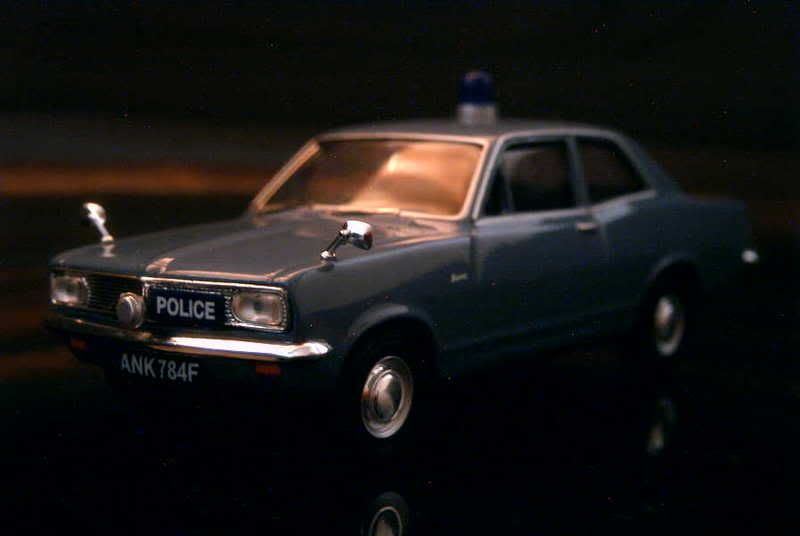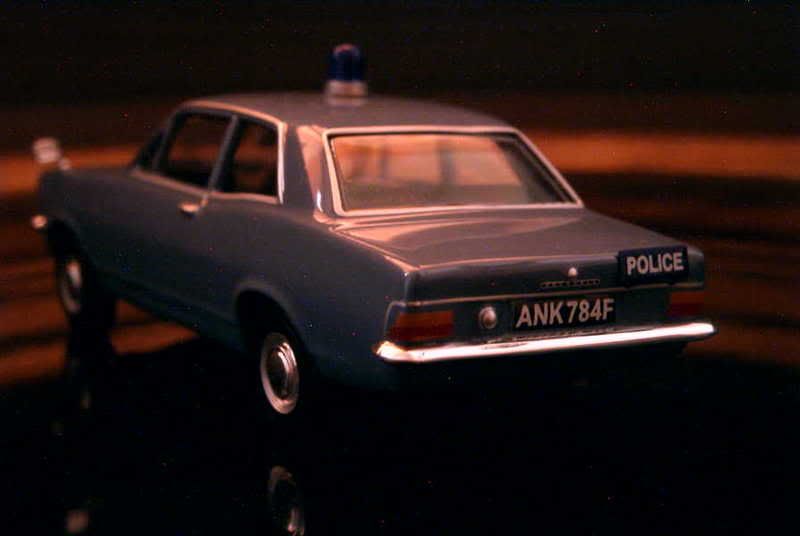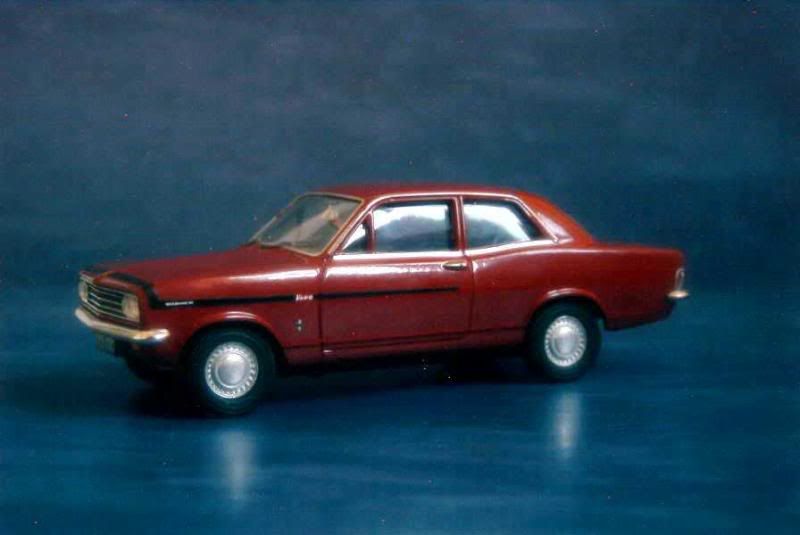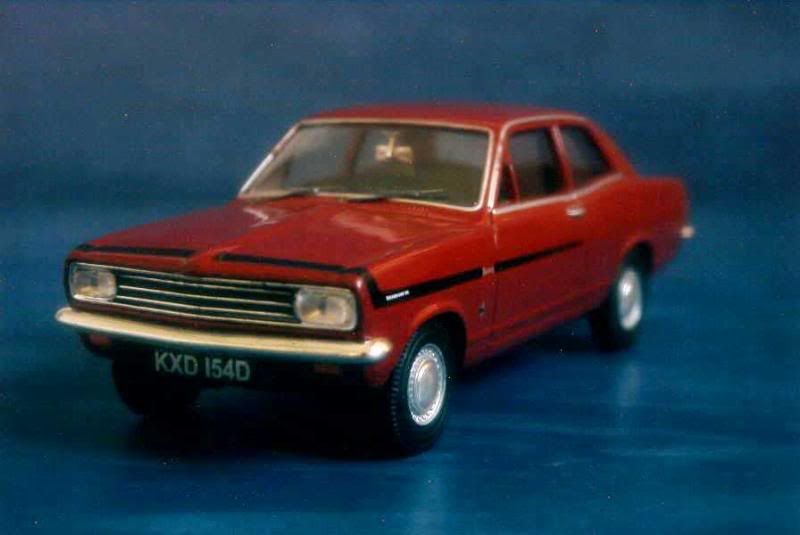A little history
The General Motors’ British subsidiary was essentially a middle-class carmaker until 1963. In September that year was introduced the company’s first popular car in modern times, the Viva.
Though fairly different, the Viva, or HA as it was known internally, unmistakably looked much like its German relative, the Opel Kadett, then one year-old. As the Kadett, the Viva was a two-door saloon of very conventional design, fitted with a somewhat ungainly body – too short a front overhang, too long a rear overhang, at least to modern enthusiasts. Despite its extreme conservatism, the Viva was in a favourable situation by the time of its launch: its main competitor, the Ford Anglia, was by then an old car which inverted backlight, which had never caught on the public, was looking odder and odder as time went by.
With the HA receiving a warm welcome from the British motorists, Vauxhall decided not to rest on its laurels. Just three years after the initial Viva had been introduced, it already found a successor in the HB, a totally new car. Slightly bigger engines (a 1.2-litre four replaced the previous 1.1-litre) and a brand new suspension that promised fine handling weren’t much to appreciate for the public, who rather noticed the up-to-date design, an American-inspired “coke bottle” which replaced the extremely angular body of the former HA.
Its eternal rival Ford having made good of its privileged relationship with Lotus, which designed the sporty Ford Lotus Cortina for its partner, Vauxhall decided to do quite the same with its Viva HB, creating the Viva SL/90 Brabham. Well, no particular links existed between the Vauxhall company and the then-double Formula One champion Jack Brabham, which involvement in the car’s design was most probably limited to receiving a check in return for the use of his name, but this was still good publicity. For real performance though, the HB had to wait until the introduction of the 2.0-litre GT, which borrowed the engine of its bigger companion the Victor in February 1968.
It can hardly be avoided to mention that the HB formed the basis for the new Australian compact, the first generation Holden Torana. Designed to European standards, the Viva suffered “down under” and received much criticism. Holden had done a lot to adapt the car to local conditions nonetheless, even creating a four-door version… which bodies were sent back to England in order to build a new four-door Viva!
In 1970, the HB gave way to a brand-new Viva HC. Roughly similar in size and mechanical specs, the HC introduced an updated styling, which centre-bonnet hump, extending forward to the grille centre, made the car some kind of a European Pontiac. Furthermore, it was now available as a British-designed four-door saloon, but its estate variant still had only two doors. A large range of engines was available, up to a 2.3-litre four, though the highest-powered Vivas were sold as Magnum starting with the 1974 model year.
The Viva’s slow agony started in early 1975 when the Vauxhall Chevette, a hatchback saloon closely related to the Opel Kadett, was introduced. Despite being positioned lower in Vauxhall’s range, the Chevette ate up a large market share of the Viva. Unfortunately, the Chevette also pushed Vauxhall’s long-running love affair with rust to new extremities. Therefore, Vauxhall traditional customers seeking a popular car had the choice between an ageing model which wasn’t above reproaches regarding reliability, and a brand-new car soon known as a piece of junk. In the depressed British automobile industry scene of the late Seventies, Vauxhall was rather lucky to have the support of an international group as GM.
Production of the Viva HC was cancelled for the 1980 model year. By then it was the last “real” Vauxhall, as all models from the British company would be from then on, as the Astra which succeeded it, based on Opels. Unknown at this time, the Viva's disappearance marked the beginning of the end for the once lively British automobile industry.
About the models
Model: Vauxhall Viva
Year: 1966
Maker: Corgi
Scale: 1/43
Distributed by: Vanguards
Acquired: brand new, in December 2006, in Hong Kong, S.A.R.
Very correct model of a police Vauxhall HB, which notably enjoys Vanguards’ usual photo-etched wipers, a rarity in this price range, and a working suspension. Unfortunately, this later specification gives me some trouble as my model is terribly sagging on one side (I tried to hide this defect when I took the following pictures). Probably easy to fix, except Vanguards habit of cleverly hiding the chassis’ screws under removable chassis elements makes opening the model without breaking anything rather tricky when you aren’t familiar with this peculiar arrangement. I’d give 11/20 to this model, owing to its sorry factory defect.


Model: Vauxhall Viva SL/90 Brabham
Year: 1966
Maker: Corgi
Scale: 1/43
Distributed by: Vanguards
Acquired: second hand with neither stand nor box, in August 2007, through a friend from Shanghai, China
This Brabham version is basically the same car with a different paint job including a specific decoration. My rating is 13/20.



The General Motors’ British subsidiary was essentially a middle-class carmaker until 1963. In September that year was introduced the company’s first popular car in modern times, the Viva.
Though fairly different, the Viva, or HA as it was known internally, unmistakably looked much like its German relative, the Opel Kadett, then one year-old. As the Kadett, the Viva was a two-door saloon of very conventional design, fitted with a somewhat ungainly body – too short a front overhang, too long a rear overhang, at least to modern enthusiasts. Despite its extreme conservatism, the Viva was in a favourable situation by the time of its launch: its main competitor, the Ford Anglia, was by then an old car which inverted backlight, which had never caught on the public, was looking odder and odder as time went by.
With the HA receiving a warm welcome from the British motorists, Vauxhall decided not to rest on its laurels. Just three years after the initial Viva had been introduced, it already found a successor in the HB, a totally new car. Slightly bigger engines (a 1.2-litre four replaced the previous 1.1-litre) and a brand new suspension that promised fine handling weren’t much to appreciate for the public, who rather noticed the up-to-date design, an American-inspired “coke bottle” which replaced the extremely angular body of the former HA.
Its eternal rival Ford having made good of its privileged relationship with Lotus, which designed the sporty Ford Lotus Cortina for its partner, Vauxhall decided to do quite the same with its Viva HB, creating the Viva SL/90 Brabham. Well, no particular links existed between the Vauxhall company and the then-double Formula One champion Jack Brabham, which involvement in the car’s design was most probably limited to receiving a check in return for the use of his name, but this was still good publicity. For real performance though, the HB had to wait until the introduction of the 2.0-litre GT, which borrowed the engine of its bigger companion the Victor in February 1968.
It can hardly be avoided to mention that the HB formed the basis for the new Australian compact, the first generation Holden Torana. Designed to European standards, the Viva suffered “down under” and received much criticism. Holden had done a lot to adapt the car to local conditions nonetheless, even creating a four-door version… which bodies were sent back to England in order to build a new four-door Viva!
In 1970, the HB gave way to a brand-new Viva HC. Roughly similar in size and mechanical specs, the HC introduced an updated styling, which centre-bonnet hump, extending forward to the grille centre, made the car some kind of a European Pontiac. Furthermore, it was now available as a British-designed four-door saloon, but its estate variant still had only two doors. A large range of engines was available, up to a 2.3-litre four, though the highest-powered Vivas were sold as Magnum starting with the 1974 model year.
The Viva’s slow agony started in early 1975 when the Vauxhall Chevette, a hatchback saloon closely related to the Opel Kadett, was introduced. Despite being positioned lower in Vauxhall’s range, the Chevette ate up a large market share of the Viva. Unfortunately, the Chevette also pushed Vauxhall’s long-running love affair with rust to new extremities. Therefore, Vauxhall traditional customers seeking a popular car had the choice between an ageing model which wasn’t above reproaches regarding reliability, and a brand-new car soon known as a piece of junk. In the depressed British automobile industry scene of the late Seventies, Vauxhall was rather lucky to have the support of an international group as GM.
Production of the Viva HC was cancelled for the 1980 model year. By then it was the last “real” Vauxhall, as all models from the British company would be from then on, as the Astra which succeeded it, based on Opels. Unknown at this time, the Viva's disappearance marked the beginning of the end for the once lively British automobile industry.
About the models
Model: Vauxhall Viva
Year: 1966
Maker: Corgi
Scale: 1/43
Distributed by: Vanguards
Acquired: brand new, in December 2006, in Hong Kong, S.A.R.
Very correct model of a police Vauxhall HB, which notably enjoys Vanguards’ usual photo-etched wipers, a rarity in this price range, and a working suspension. Unfortunately, this later specification gives me some trouble as my model is terribly sagging on one side (I tried to hide this defect when I took the following pictures). Probably easy to fix, except Vanguards habit of cleverly hiding the chassis’ screws under removable chassis elements makes opening the model without breaking anything rather tricky when you aren’t familiar with this peculiar arrangement. I’d give 11/20 to this model, owing to its sorry factory defect.


Model: Vauxhall Viva SL/90 Brabham
Year: 1966
Maker: Corgi
Scale: 1/43
Distributed by: Vanguards
Acquired: second hand with neither stand nor box, in August 2007, through a friend from Shanghai, China
This Brabham version is basically the same car with a different paint job including a specific decoration. My rating is 13/20.






No comments:
Post a Comment